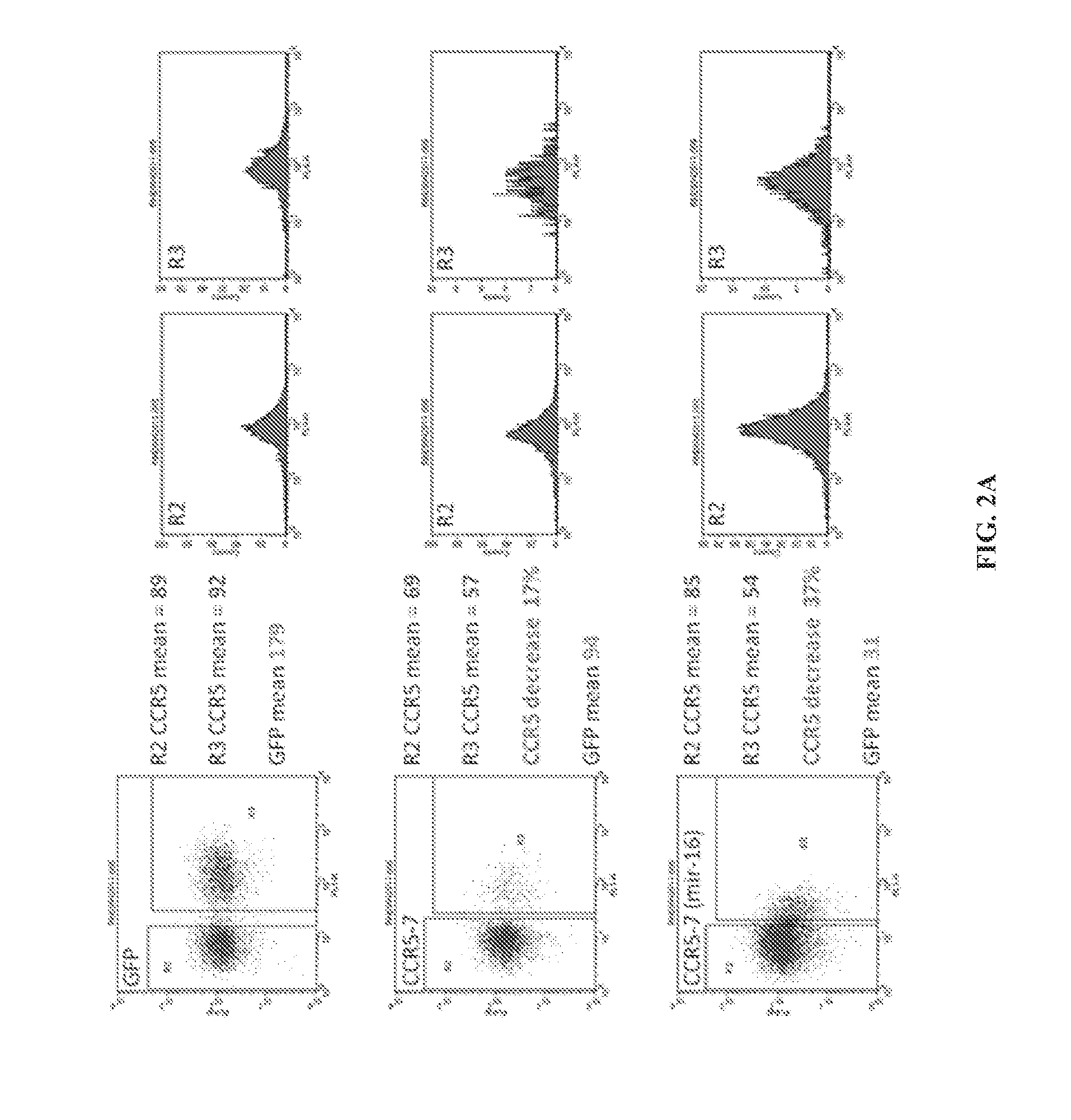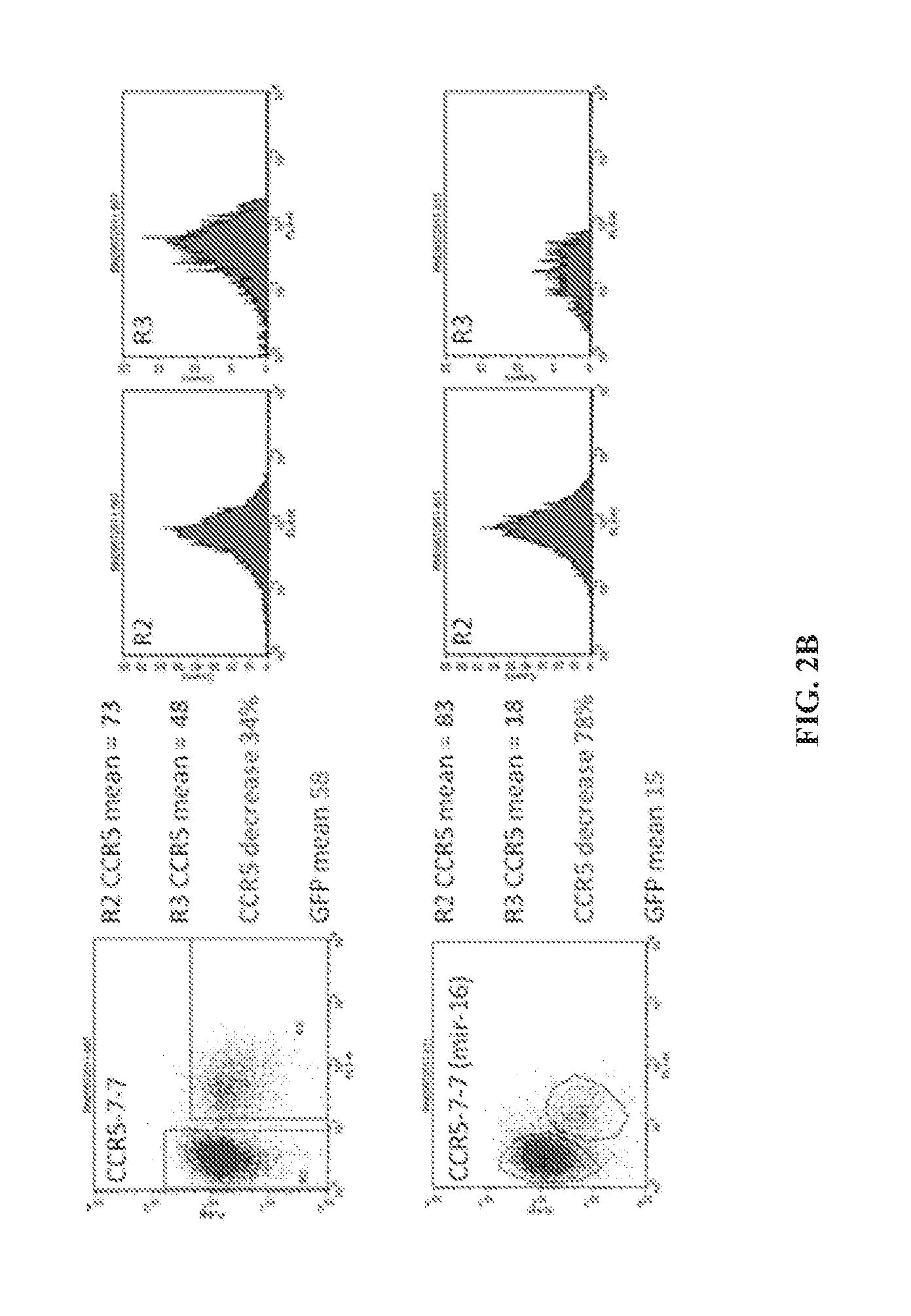Nucleic acids for down-regulation of gene expression
a technology of gene expression and nucleic acids, applied in the field of molecular biology and biochemistry, can solve the problems of insufficient clinical efficacy of gene expression reduction achieved with such strategies, and the translation of protein translation is reduced
- Summary
- Abstract
- Description
- Claims
- Application Information
AI Technical Summary
Benefits of technology
Problems solved by technology
Method used
Image
Examples
example 1
Vector Construction of New Generation Mir-16 Lentivectors
[0093]Artificial CCR5 targeting miRNA oligos were generated by PCR using the following primers:
FW:CAGAAGGGGATCCATCGATACTAGTGGTGATAGCAATGTCAGCAGTGCCTREV:5′-AGTAGCTTCTAGAGTAGAGTATGGTCAACCTTACTT
[0094]The Herculase II Fusion DNA Polymerase was used for the PCR reaction. Reaction conditions were set up according to the manufacturers specifications (Agilent technologies, Santa Clara, USA). The PCR products were digested with BamHI and XbaI restriction enzymes (New England Biolabs, Ipswich, Mass.), and ligated into a pENTR Gateway entry plasmid already containing the Green fluorescent protein (GFP) coding sequence, pENTR-GFP cut BamHI, XbaI. The digested miRNA oligo was ligated into the pENTR-GFP using T4 DNA ligase concentrated (New England Biolabs, Ipswich, Mass.). pENTR-GFP constructs with multiple miRNAs were created by a method adapted from (Sun et al., 2006). The final lentivector with the human UBI promoter driving expression ...
example 2
Virus Production and Titration
[0095]Lentiviral vector stocks were generated using the HIV-1 derived packaging psPAX2 and envelope pCAG-VSVG plasmids using by calcium phosphate mediated transient transfection of HEK 293T cells, a method previously described (Salmon & Trono 2007). Lentiviral titer was assessed via flow cytometry by analyzing the level of reporter gene (GFP) in transduced HeLa cells after 5 days, as described previously (Giry-Laterriere el al., 2011; Salmon and Trono, 2011) on a facscalibur.
example 3
Transduction of Target Cells and CCR5 Knockdown Analysis
[0096]In order to test the knockdown effect of the new generation mir-16 miRNA lentiviral vector, a modified HeLa cell line (TZ) cells were used that express native CCR5 protein. TZ cells cultured in DMEM were transduced with 3 different volumes of harvested lentivector. After 5 days cells were stained with an APC labeled monoclonal human CCR5 antibody (BD Biosciences) (as a control non-CCR5 expressing HeLa were used) and transduction efficiency was analyzed by measuring the level of GFP expression by flow cytometry. Samples where between 2-20% of the cells were transduced (expressed GFP) were used for further analysis which allows us to look at the knockdown effect of the various lentivector constructs at a level of 1 copy per cell.
PUM
| Property | Measurement | Unit |
|---|---|---|
| length | aaaaa | aaaaa |
| nucleic acid sequence | aaaaa | aaaaa |
| drug resistance | aaaaa | aaaaa |
Abstract
Description
Claims
Application Information
 Login to View More
Login to View More - R&D
- Intellectual Property
- Life Sciences
- Materials
- Tech Scout
- Unparalleled Data Quality
- Higher Quality Content
- 60% Fewer Hallucinations
Browse by: Latest US Patents, China's latest patents, Technical Efficacy Thesaurus, Application Domain, Technology Topic, Popular Technical Reports.
© 2025 PatSnap. All rights reserved.Legal|Privacy policy|Modern Slavery Act Transparency Statement|Sitemap|About US| Contact US: help@patsnap.com



